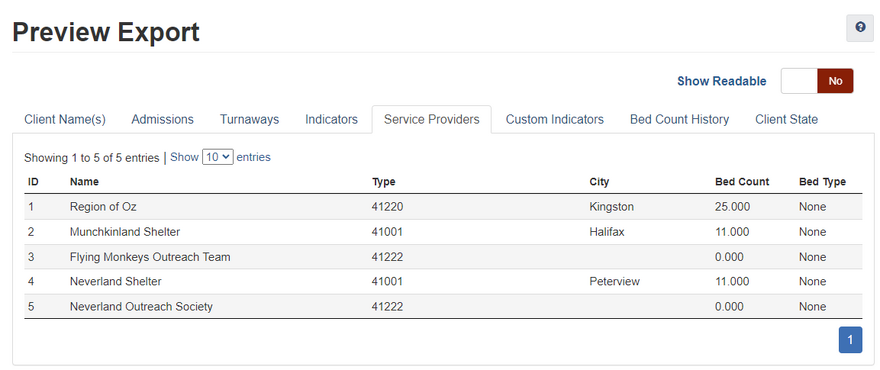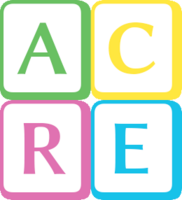
This blog post is part of a series about Reaching Home HIFIS requirements:
For Reaching Home communities, there are a number of reporting requirements that come attached to the program. While it’s not explicitly in your agreements that you have to put data into specific modules, it is required that you provide Housing, Infrastructure and Communities Canada (HICC) with some data. Further, there are official HIFIS reports that pull the data out in specific ways. So therefore, it is actually required that you do enter certain data in certain fields and modules in HIFIS, otherwise you won’t be fulfilling your obligations by reporting inaccurate data.
Reporting Mechanisms
There are three different avenues via which data is provided from you to HICC.
Some data from HIFIS gets directly exported to HICC on a quarterly basis. It’s client-level (not aggregated) data, but it is anonymized, so no names are exported. The exported fields are listed in Annex A of the HIFIS Data Provision Agreement.
Communities are also required to provide community-level data through what was known as the Community Homelessness Report via what is now known as the Reaching Home Outcomes Report. This is community-level data and answers questions like “how many people were homeless in my community last year.”
Communities are required to complete the Results Reporting Online form (RROL) via what is now known as the Reaching Home Project Results set of reports. This is service-related data and answers questions like “how many people did we assist via Housing First last year.”
These three mechanisms look at different data, and while there is overlap from one to another, it’s important to look at all of these sources together.
So what data is required for you to report on (and therefore collect)?
1. Client Information
The first category of information we’ll be looking at is Client Information, which is to say, data about your clients that doesn’t have to do with the services they are receiving.
In a previous blog post, we indicated that it was essential to create client files, collect consent, and record housing status and activity status. But that post didn’t go into a lot of detail about what specific modules were expected. Furthermore, you’re required to collect more data about clients than just those points. So let’s dive in, shall we?
Definitely Mandatory
It’s absolutely mandatory to collect some data about all clients. This information is identified as being mandatory fields on the “Add New Client” screen. Although technically you could record that a client’s Veteran Status is “Unknown / Not Asked” for every client, it’s mandatory to report on how many of your clients are veterans, and it’s a mandatory field, so you should have 100% complete data for every single person you assist. Here are the completely, definitely mandatory data points:
Gender
Date of Birth (or at least Approximate Age)
Racial Identity (new in 60.1)
Citizenship/immigration status
Indigenous indicator
Veteran status
Mostly Mandatory
Next, there are some pieces that are pretty much mandatory, but they’re not on the client vitals screen, so you have to go to another page to record it.
The first of these is Family. When someone is in a family, each family member needs a client file in HIFIS (children gain Inherited consent from their parent), and they need to be linked through the Family module. If someone is part of a family, it’s mandatory to record that information. If a person leaves a family, then it’s also mandatory to update the family composition.
The second of these pretty-much-mandatory data elements is Housing History. It’s so essential for so many reasons, yet not all communities require their staff to collect it. As a general rule, you could consider it mandatory to always know both the current housing situation and the housing situation the person was in previously, for every client you’ve assisted. The one exception to this rule is if they’re staying in shelter, recording a shelter Admission is basically the same as recording a Housing History record (they both update the Housing Status and you don’t want them to conflict with each other or require staff to double-enter things). However, some shelter workers take that as a license to say that they never need to record Housing History, when that’s just not true. It’s expected that shelter workers need to record Housing History for any known periods where the client is not in shelter (for example, “where did you stay last night?”).
Kinda Mandatory
We are now down to the third tier of mandatoriness, in which this data is reported to HICC, but either they consider it optional or it’s mandatory in a very specific situation. So let’s call these data points encouraged, but not completely mandatory.
Income is part of the Economic Integration RROL report, and it is one of the exported data points.
Education is part of the Economic Integration RROL report, and it is one of the exported data points.
Disability YN, the field on the Client Vitals screen, is used to measure people with a disability in the RROL reports.
Country of Birth, the field on the Client Vitals screen, is one of the exported data points.
Life events is one of the exported data points.
Contributing Factors is one of the exported data points.
Health Issues is one of the exported data points.
2. Services
The next category of information we’ll be looking at is what services need to be recorded. I often get questions from a student in training or a service provider, observing that, say, “Showers” is one of the services in the Goods & Services drop-down menu, and therefore wondering if that means they need to start tracking every person that takes a shower at their shelter or drop-in program.
The golden general rule is that you should record that you assisted a client when you assisted them, and say what sort of assistance you provided. But there is, of course, some degree of flexibility when it comes to how detailed this needs to be. For example: you spent the morning with a client and did six different things with them. Do you need to record all six things separately, or is it sufficient to record simply that you spent three hours with the client? Another example: your drop-in centre was open on Tuesday and you had ten visitors. Is it simply sufficient to record who visited, or do you have to record what each of those ten visitors did while they were there?
The specific answers depend on the type of program and what type of service is being provided.
For emergency shelters, it’s mandatory to book clients into and out of shelter beds. This, along with shelters’ bed counts, is directly exported to HICC and used for the National Shelter Study. Data is also exported about turnaways, so we can assume that information about turnaways, shelter admissions, and bed counts are used to determine demand for shelter beds.
For housing programs, the Housing Placements component of the RROL report is most relevant. It only pulls data from the Housing Placements module, and requires answers to questions such as how long it took to house someone from homelessness and how long they maintained their housing afterwards. In addition, this is the program most likely to have results related to Economic Integration, so they may be required to utilize the Case Management module and record the types of assistance provided along with recording Income and/or Education records (see Client Information, above).
For eviction prevention programs, the Prevention and Diversion Services component is going to be most applicable. This requires staff to record a Housing Loss Prevention record with a Housing Subsidy and/or a Goods & Services record and/or a Diversion record when appropriate. This section’s a bit complicated, so I recommend you read the guide.
If your program: (1) doesn’t have shelter beds and (2) doesn’t house people directly and (3) doesn’t prevent housing loss, then none of the three above apply to you. Instead, you only need to worry about the Social and Community Integration activities, which are primarily measured through the Group Activities module, and Economic Integration if applicable.

Comments